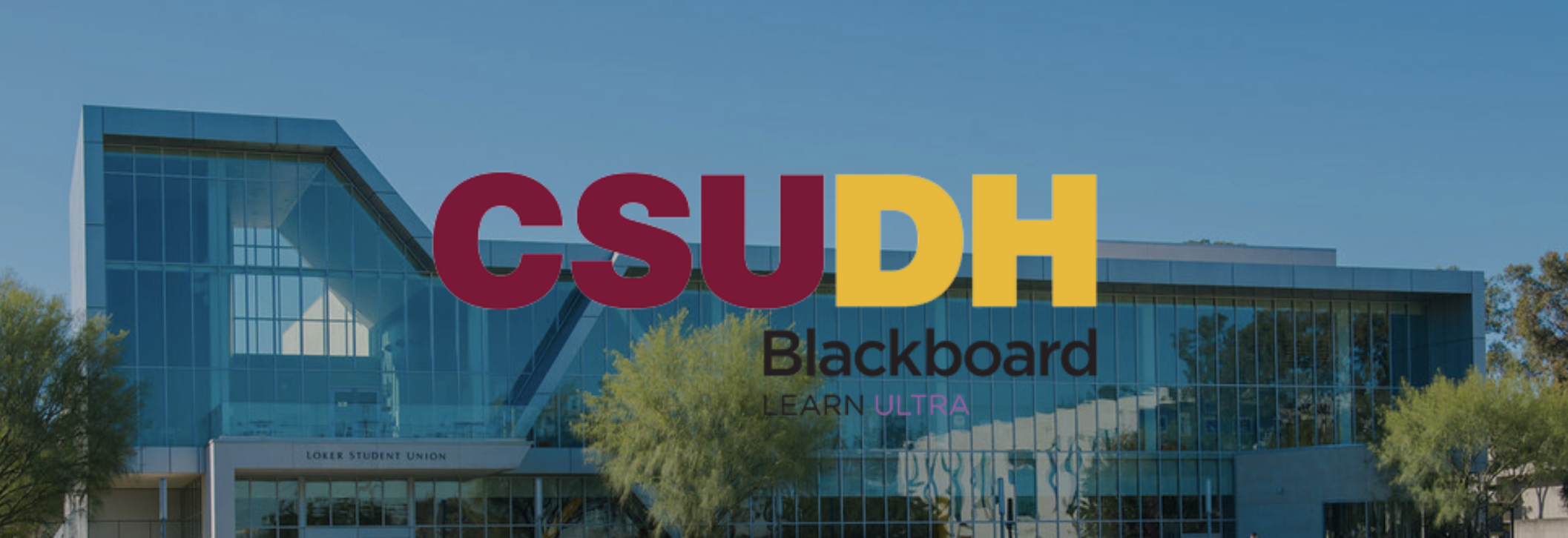New CSUDH Blackboard logo. Screenshot from https://toro.csudh.edu/.
By Melanie Gerner, Staff Reporter
You may have noticed that new Learning Management System (LMS) smell on your first day attending classes online at California State University, Dominguez Hills. And you would be right. The visual aspects of the Blackboard Ultra (BbU) LMS, including the “Institution Page” and upgraded driver’s side navigation panel, are new. It is easy on the eyes, but once you walk around and kick the tires you may notice it is just a shell and under the hood, the “courses” have not changed.
According to the CSUDH Academic Technology website, the new look of the 2020 LMS is phase two of a six-stage migration that continues through fall of 2022. The roll-out of a new LMS the week before CSUDH returned to a virtual model in the midst of a pandemic may seem ill-timed.
Actually, the six-phase roll out of BbU was previously delayed. Originally, the upgraded LMS phase two was to begin in the spring of 2020, but was postponed due to Covid-19.
“I want to emphasize that we are in phase one. We are not into Blackboard Ultra courses yet,” Director of Instructional Technology & Design and Academic Technology Officer for CSUDH, Reza Boroon, said. “Nothing has changed about courses. The next phase is to train faculty on the new Ultra course shell, which is exactly like Canvas.”
This graphic shows a loose timeline of six phases of the Blackboard Ultra Learning Management System migration. Graphic by CSUDH Academic Technology page at CSUDH.edu
In the fall of 2017, the Academic Technology Committee (ATC), a subcommittee of the Academic Senate, was in charge of reviewing and assessing possible new LMS software for the campus. At the request of the Chancellor’s office, several CSU’s were doing research on LMS’s at this time, targeting a better fit for each campus focusing on ADA compliance and cloud-based Software-as-a-Service (SaaS).
After faculty and staff reviewed and gave feedback on Canvas, BbU and Desire To Learn Saas options, on May 8, 2019 the ATC decided to go with BbU. The committee submitted this recommendation to the Provost and VP of Information Technology. Next, the recommendation was discussed among the Academic Senate, it was then reviewed by the cabinet and a decision to implement and migrate to BbU was made.
The original focus of ADA compliance was supported by Blackboard Ally, a tool that assesses and converts course material to be more accessible to students and faculty with disabilities. The Saas is in fact cloud-based and can be accessed from any location via the web or mobile device. BbU integrates several third party applications including Quizlet and Zoom.
At “A CSUDH COVID-19 Response Town Hall – Challenges & Rewards of Virtual Learning,” on Aug. 26, 2020, Assistant Professor of Communications, Paul Fornelli, shared resources and tutorials to support students and faculty with technology, including BbU.
“There is live Blackboard support via Zoom [for students] and that again is available, Monday through Friday from 8:00 a.m. to 6:00 p.m.,” Fornelli said.
Fornelli also discussed BbU third-party software integrations and tools for faculty. These include Respondus for creating exams, LockDown Browser to prevent cheating during online exams and Blackboard Ally to support students with disabilities.
One feature absent from BbU is the preferred pronoun setting in the profile menu; the Canvas LMS does have this feature. All CSUDH students’ basic profile information in BbU is generated through PeopleSoft, the university’s student management software system, Boroon explained.
Cost was a factor in the decision. The “old” Blackboard 9.1 had a price tag of around $130,000 per year. BbU costs around $110,000 per year with a four year contract and an option to renew for an additional two years at the same price. This annual fee includes 24/7 technical support, including nights, weekends and holidays.
During an unofficial test of the BbU tech support at 5:30 am on a Wednesday morning, the line was 12 users long and took about 20 minutes for service. This support is available to faculty, staff and students, from Blackboard.
Canvas had a base cost of around $150,000 per year and did not include tech support or conversion costs. Conversion costs were a significant consideration as the CSUDH LMS runs around 3,000 courses.
“We got a new platform, with better pricing, it looks like Canvas, and believe it or not it does have more features within the courses for faculty than Canvas does, because this is a newer platform,” Boroon said. “These were all the things we discussed on our committee. That is why we made that decision.”

